 Sorry I've been so late in posting this. We were in Hebron 4 days ago- since then I've been to Ramallah and arrived today in Nablus. The days have been so full and tiring that I've not really been able to get to a computer. It takes a couple of hours to write a decent post- I didn't realize what hard work blogging was!
Sorry I've been so late in posting this. We were in Hebron 4 days ago- since then I've been to Ramallah and arrived today in Nablus. The days have been so full and tiring that I've not really been able to get to a computer. It takes a couple of hours to write a decent post- I didn't realize what hard work blogging was!I forgot to mention that we were joined on our last day in Bethlehem by J, another British doctor who has just spent two weeks working in Jenin. He's been to Palestine before. He will stay with us in Hebron and Ramallah.
So on day 5 we took the shared taxi from Bethlehem to Hebron. These yellow Ford transit vans are everywhere, and are called service (servees in Arabic). Basically you sit in the van and wait till it fills up with other people. And you pay next to nothing for the journey.
Hebron (al-Khalil) is the largest city in Palestine and a major commercial centre. It is a congested, noisy, colourful place of significance to Muslims and Jews as the burial place of the Prophet Abraham (Ibrahim). It is also home to the most rabid and fundamentalist Jewish settlers.
After a quick lunch in a cafe which we get drawn into by the owner (it is impossible to walk five paces in Palestine without hearing cries of 'Welcome! Welcome!') we are taken to the area where we will be staying- Tel Rumeida. M, a good friend from Glasgow who works for the International Solidarity Movement (ISM) shows us the way.
Hebron is divided into two areas- H1 and H2. H1 is under the control of the Palestinian Authority (although as we learn later, this means little as Israeli tanks enter H1 at will). H2 is under Israeli military control. Tel Rumeida is in H2. The population of H2 is 30000- mostly Palestinian Muslims. However since 1968, a growing number of Jewish settlers- mainly from the Brooklyn area of New York- have been living in H2. They sometimes produce fake documents to illegally take over empty houses. In other cases, Palestinians have come home from holiday to find their houses taken over by settlers. The commonest method of takeover is by force- Palestinians are continually harassed into leaving their houses, which then get occupied immediately. In one case a settler family wanted to expand their living room- they simply kicked down a wall and occupied the neighbouring Palestinian shop.
The reason Israel controls H2 is bizarre- to 'protect' the 400 or so settlers from the Palestinians. 4000 soldiers are deployed to do this.
You walk into Tel Rumeida through a checkpoint. This is a series of sliding doors, where an Israeli soldier checks your bags. Or more precisely, checks your bags- even groceries- if you are Palestinian. If you are a foreign citizen, this usually does not happen- we simply walked through. If you are Jewish, you don't enter via the checkpoint. You drive through uninhibited via a separate entrance. You will see illegal settlers whizzing round Tel Rumeida in their expensive sedans- but the 30000 or so Palestinians are not allowed to drive in their own neighbourhood. They have to get down at the checkpoint and walk home. To enter the neighbourhood from the checkpoint, you have to negotiate a steep hill. It has an approximately 60 degree incline and by the time we reached the top we were shattered. Imagine an elderly woman with heavy shopping bags or a pregnant woman climbing the hill while the settlers drive past.
The humiliation does not end there. The settlers regularly abuse the Palestinian residents physically- with stones and kicking- and verbally. In the old market- which used to be one of the most vibrant places in Palestine- settlers have occupied the flats above Palestinian shops. They regularly throw their rubbish onto passing people. In desperation, the Palestinians have put a net across the lane, between the lower and upper storeys. We saw the objects caught by the net- glass, metal, and concrete blocks capable of killing people. Not to mention human excreta. The settlers sometimes urinate onto the heads of pedestrians.
You may think this is too far-fetched but please feel free to visit YouTube or the website of the Tel Rumeida project (http://www.telrumeidaproject.org/) if you don't believe me. There are numerous videos documenting these incidents.
After that harrowing walk through the old market, J and I visit a clinic in Tel Rumeida run by the Palestinian Medical Relief Society (PMRS). The doctor working there explains how even he and his nursing staff have received abuse from the settlers. A gynaecologist working in the area has already been forced to abandon his practice and flee.
We then pick up our bags and M takes us up another steep hill to what is possibly the highest point in Hebron. We have a mission there. A Palestinian is living in a house located between two Jewish settlements. There is also an Israeli military post overlooking it. The settlers are desperate to occupy the house as that will link the settlements. Needless to say, the owner faces regular harassment from them. This usually takes the form of settlers trespassing into the garden, banging on the door and verbally abusing him in the dead of the night. However they are armed and have not hesitated to use weapons against other Palestinians in the past. The one thing that has enabled the owner to hold onto his house is the presence of International Solidarity Movement (ISM) members. They do not leave the house for a minute. The presence of foreign nationals makes it less likely that the house will be attacked- it is bad press for Israel if foreigners are harassed or injured. The inherent racism in this is ironic.
The house is being renovated so the facilities are, to put it simply, basic. However nobody minds because we feel privileged to be offered this opportunity by M. We meet the other ISM members who have been guarding the house- they include American, Irish, British and Israeli activists. An incredible bunch of people. Tonight they will be having a break from the house while we take over.
As we settle in, a number of local residents turn up to greet us. Some are children who wish to play football with us. Others are adults who have come to share their experiences of the occupation. A chap in his 20s reminds us of the Ibrahimi Mosque massacre in 1994 when a fanatical settler called Baruch Goldstein (a doctor) from the neighbouring Kiryat Arba settlement gunned down 29 Palestinians offering Fajr (morning) prayers while they were prostrating towards Mecca. 150 others were injured. It is not widely known that he was assisted by other settlers who reloaded his gun with further ammunition every time it ran out. He was finally overpowered and beaten to death by the remaining worshippers.
The Palestinians then turned on the Israeli soldiers who opened indiscriminate fire killing several more. In fact the soldiers entered the general hospital in Hebron and started shooting randomly, causing several casualties.
After the massacre the entrances to the shrine for Muslims and Jews were segregated. Baruch Goldstein's widow requested that the men who killed her husband be charged with homicide! A shrine to Goldstein has been erected in Kiryat Arba- a plaque there reads: "To the holy Baruch Goldstein, who gave his life for the Jewish people, the Torah and the nation of Israel". It has become a pilgrimage site for those with extreme right-wing views.
We also heard about Hebron's woes during 2002 at the peak of the Second Intifada. Israel imposed a curfew that lasted several weeks- this was not like your usual curfew in another country. If you were seen outside your house you would be shot. It would be lifted for two hours a week during which Palestinians would scramble to get essential supplies. Sometimes it would not be lifted at all.
It was not unusual for the Israelis to open random fire in the city centre, killing and wounding civilians. As if that was not enough, they dug up all the roads in the centre to prevent people from travelling. So if you wanted to get from home to work, you'd take a taxi until you were stopped by a pile of rubble and earth- which you would have to walk round, then get another taxi. I was told that getting a wounded person to hospital sometimes meant changing 5 taxis.
Every Palestinian has a story- after several hours of gut-wrenching tales we retired to our mattresses and locked the house. It is surrounded by barbed wire and the windows are protected by metal cases with tiny vents to allow some air in. A Palestinian flag proudly flutters from a pole. It was then that the significance of this house struck me. This man is trying to make a political statement by resettling land that belongs to his people.
The night passed uneventfully. In the morning we took a walk down to the Palestinian Qurtuba school. To reach this, children have to walk from their homes past the Beit Hadassah settlement, up some steep steps and then turn left onto a brick path. It is then a further 50 metre walk.
This is no ordinary school run. Settler children station themselves at the bottom and the top of the steps and fling stones at the passing Palestinian children. Several children (and internationals who walk with the kids to shield them) have been injured, some of them seriously. This nightmare is at its worst on Saturday, the Jewish Sabbath, when Jewish schools are closed but Qurtuba is open.
Having walked this path, we go back down the steps, past Beit Hadassah and onto Shuhada Street. This was once a bustling Arab market. Now it is deserted. Some Palestinians have clung to their houses on the upper storeys, but all the shops are closed. The owners have been forced to leave due to continued harassment. I cannot describe how eerie this street is- it is like walking into a ghost town from an old Western movie. All you see on either side are green-painted iron doors- all bolted shut. The settlers have welded some of the doors together, to prevent any attempts at opening them. Israeli flags flutter above them. Some of the doors have been painted with the Star of David. It brings to mind an image of a closed Jewish shop in the Warsaw ghetto at the height of Nazism. In Hebron, it is as though the Star of David has become the new swastika.
We walk back up the hill to the house on the hill. M has arrived, and wants to show us something. 'You can't miss this'. What could be worse than the sights we have already seen? We are wrong, another shock is in store. She takes us to visit two deserted houses, once belonging to Palestinians. The first one has had all its windows smashed. She tells us that the settlers use it for their drinking parties and barbecues. A rotting sheep's carcass lies in one of the rooms. The second house has been firebombed- I recognize it from the documentary 'The Iron Wall'. The charred ceiling and walls tell a horrific tale.
You cannot come to Hebron and escape the racist graffiti. It is everywhere, but the most shocking examples are in these houses. If you are easily offended, please do not read the next paragraph (in italics):
- 'Watch out Fatima, we will rape all Arabs!'
- 'Mohammed is a pig'. Below this is a drawing of a pig reading the Quran.
- 'If you Arabs had just used a f***ing condom, then none of this would have happened!'
-'Arabs to the gas chambers!'
You may wonder what the Israeli soldiers do about the settlers. The answer is- nothing. While the settlers stone, kick and spit at the Palestinians, occupy their houses, burn them down and spray-paint their walls with racist slogans, they simply look on. Indeed, they are there to 'protect' the settlers from the Palestinians! Some members of the Israeli government claim to be 'embarrassed' and 'ashamed' by the settlers. But nobody takes any action. It would be simple to remove them- after all, they are only 400. But why would Israel do so? We have already seen enough proof of its masterplan- force more and more Palestinians to leave, and then chew up their land.
I must emphasize that the settlers in Hebron are a crazy minority. Still, I find it hard to believe that members of a community that lost 6 million in the Holocaust can speak of using gas chambers. Do they not realize that they are their own worst enemy? They tarnish the name of Judaism and Jews- which is especially poignant as so many Jews are supporting the Palestinian cause. Anyone with half a brain can see that cases such as Hebron will only fuel anti-Semitism.
We leave Hebron in a servees and make our way towards Ramallah. I cannot help wondering- even if no other atrocities were being committed in Palestine, Hebron itself should make the world sit up and think. This has been going on for 40 years. Yet hardly anyone knows about it, let alone talks about it.
The ride to Ramallah takes us over more spectacular hills and valleys. This city could not be more different from Hebron- it is throbbing with life. Crowded, noisy and electric, it is the cultural centre of Palestine. Here you will find fashionable shops, the latest expensive cars, restaurants serving every cuisine imaginable, and well-heeled Palestinians rubbing shoulders with foreign visitors in trendy bars.
We need a breather so we're looking forward to our time here. But for the residents of Hebron, there is no escape.
Goodbye for now. The Ramallah report will be available soon- I must retire to my bed as it is half-past midnight.


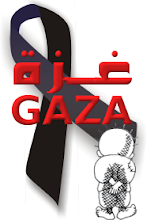
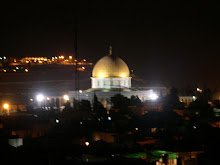
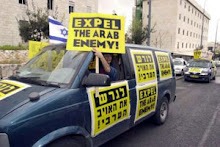




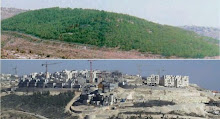




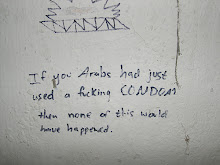
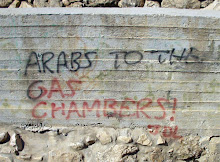

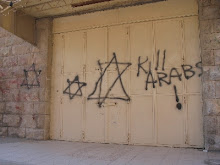
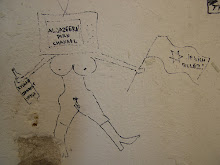
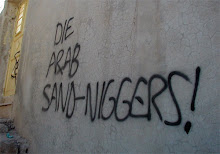
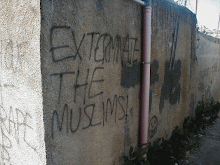
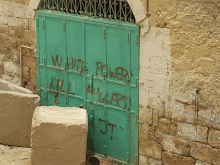



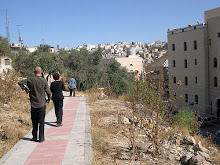

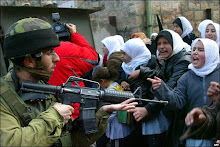
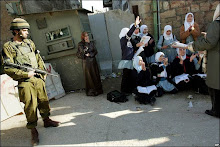
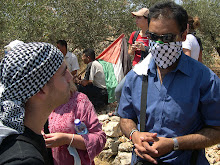
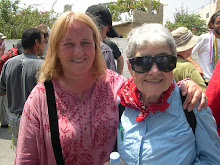
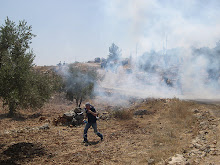
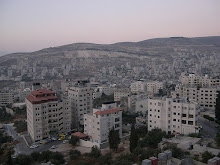

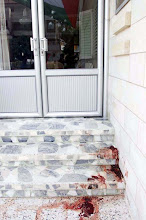








1 comment:
Hi, you have been having a time of it. There are people out there who know what is happening, but its getting it into main stream media. Governments don't want the world to know. So you have to go to the independent media & of course that takes motivation. Governments will want to keep all this swept under the carpet. So its wonderful & invaluable that international observers & Internationals keep information flowing into view.
Post a Comment